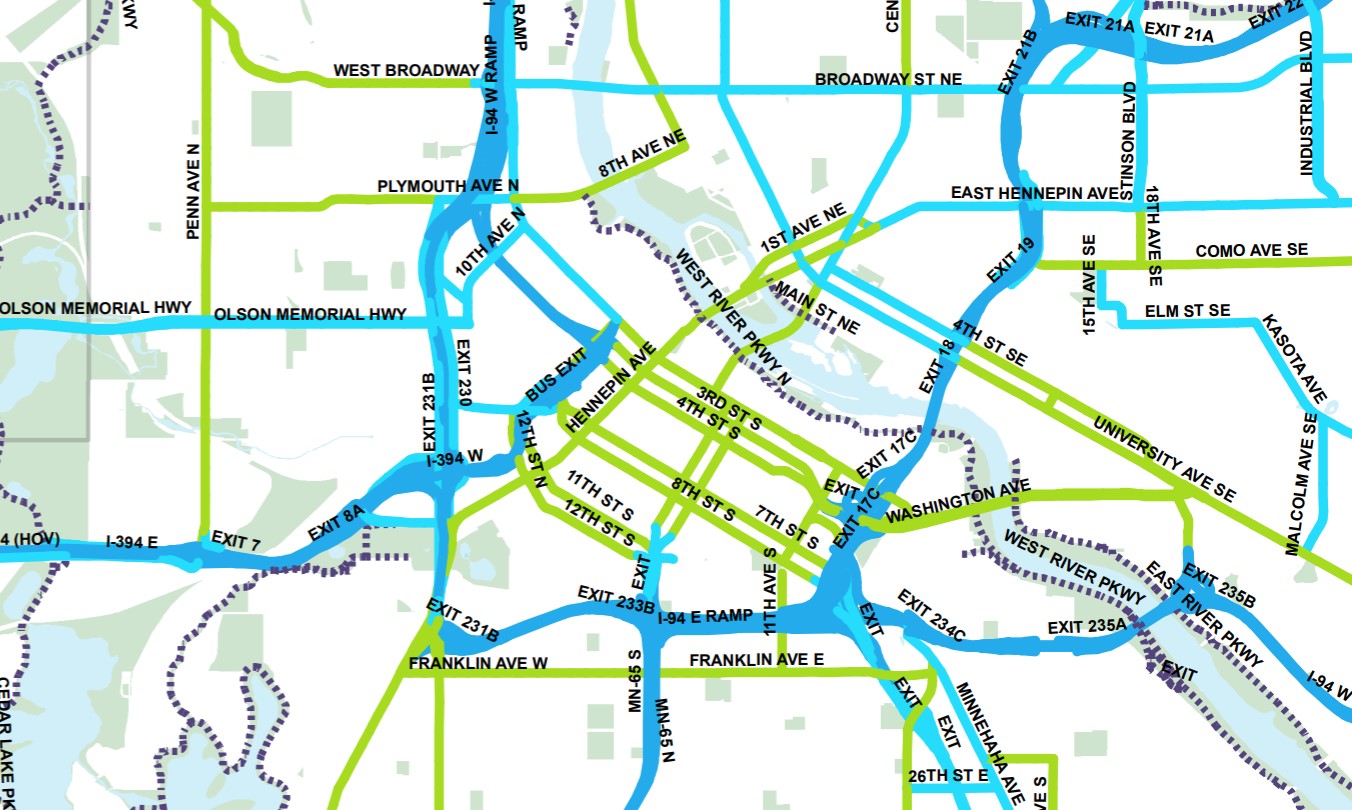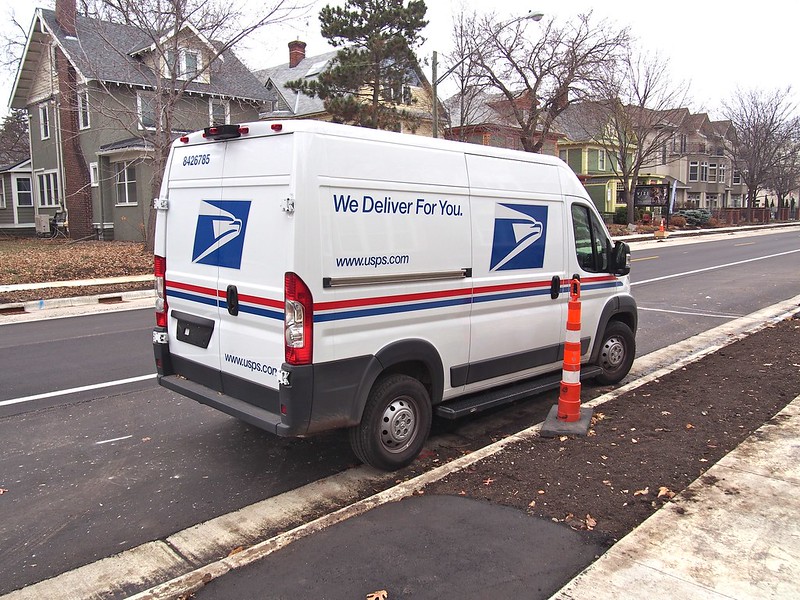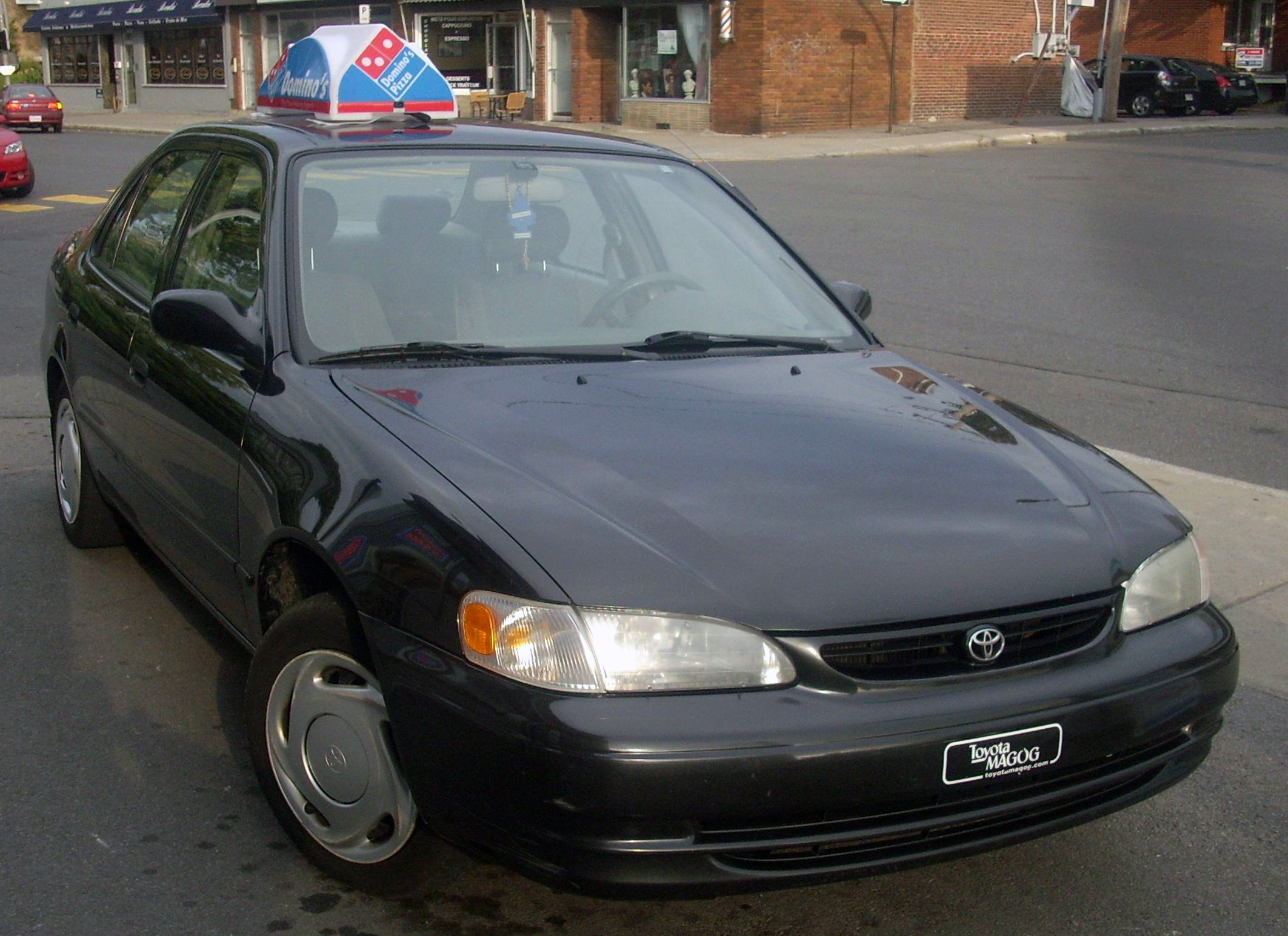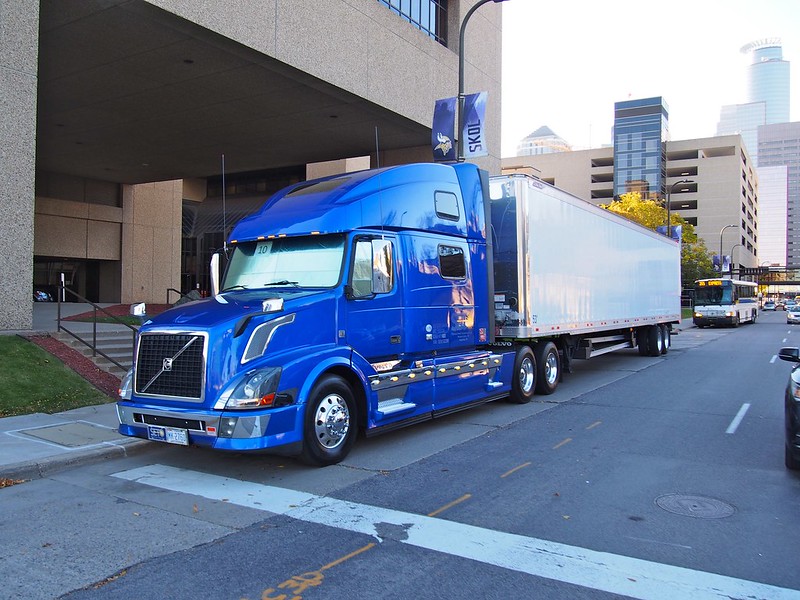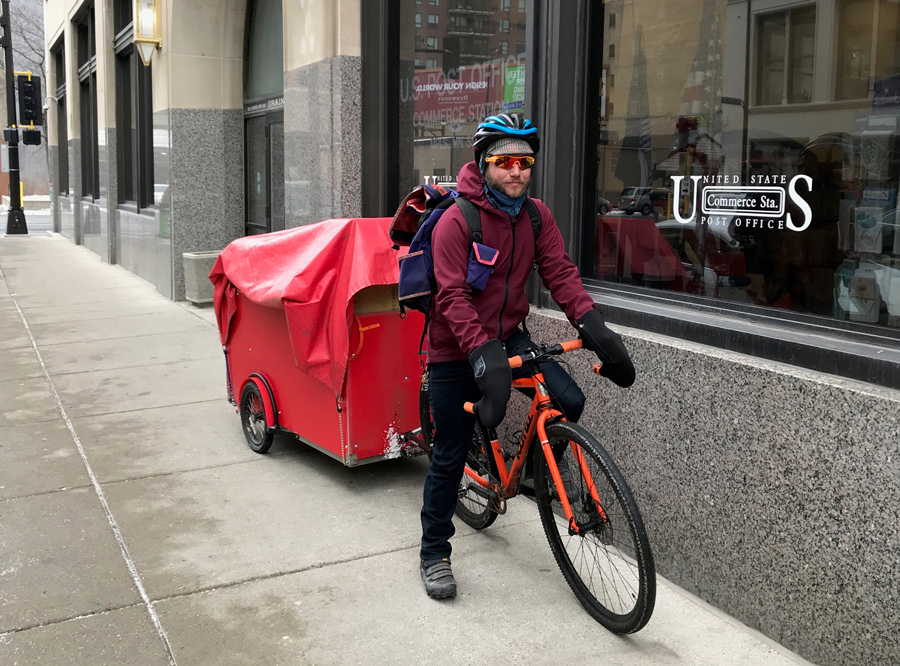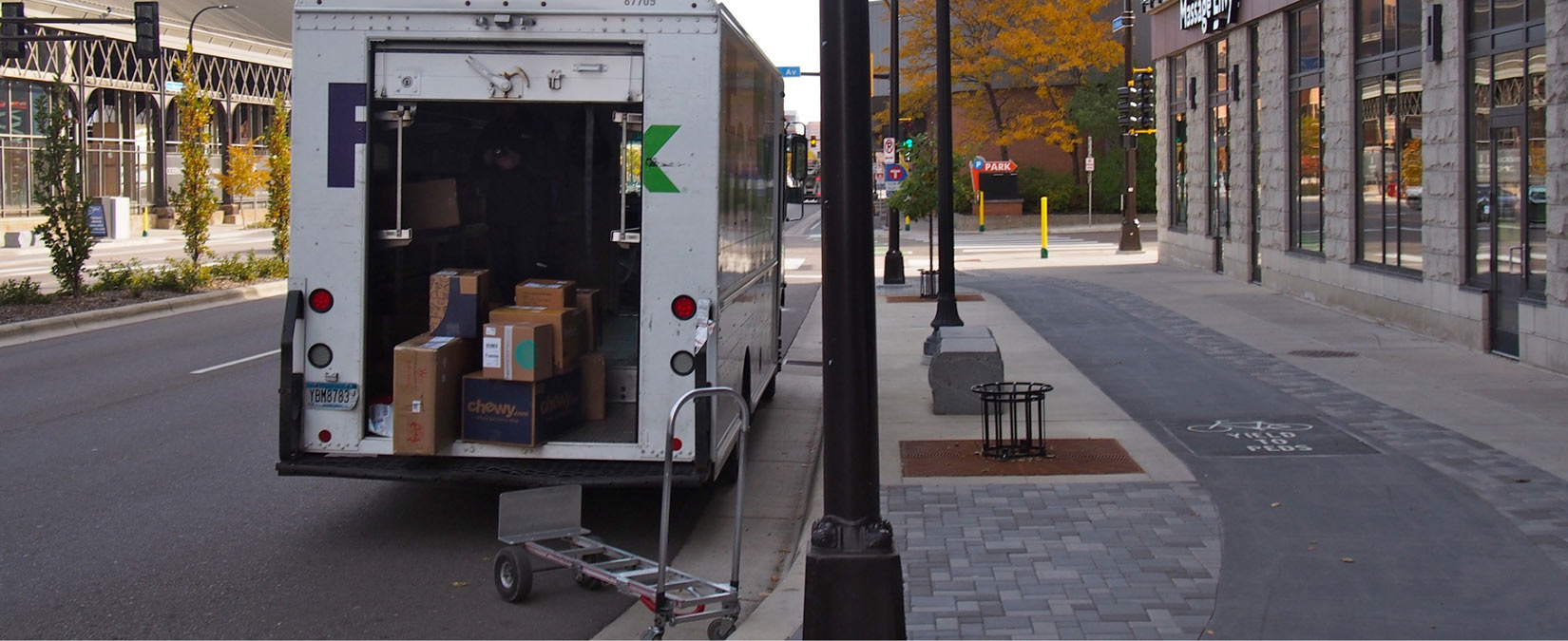
As our city continues to grow and consumer choices continue to evolve, the demand for the movement and delivery of goods will also grow. In Hennepin County, freight tonnage is expected to increase by nearly 40% by the year 2040.1 Additionally, the growth of e-commerce (purchases made online and delivered to homes and businesses) will continue to play an important role in the growing demands of goods movement. Nationally, package volume from the United States Postal Service has more than doubled in the past decade from 3.1 billion in 2010 to 6.2 billion in 2018.2
The increased demand for goods will also increase demands on our city streets. Technology plays a large role in how these goods are delivered; as cities and companies experiment with drones, delivery robots, delivery lockers, and sophisticated algorithms to make deliveries more efficient, we will look to learn from and implement the best ideas. As the volume of freight moving through and to Minneapolis continues to grow, we need to be prepared to mitigate any negative impacts to safety, congestion, and the environment.
Minneapolis 2040 established a freight policy which states the City will accommodate freight movement and facilities to support the local and regional economy.
- Hennepin County Public Works. Hennepin County Freight Study (2016)
- United States Postal Service (2018). Includes Priority Mail, Priority Mail Express, First-Class Packages, Package Services, Parcel Return Service, and Parcel Select.
Reaching our transportation goals requires strategic action. Listed below are strategies and actions that we plan to undertake in the next 10 years.
